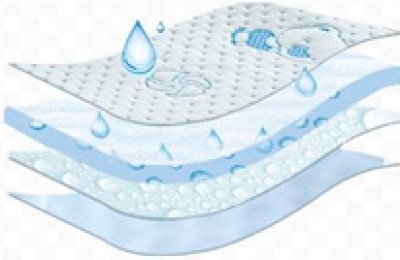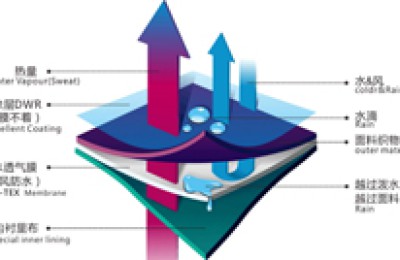Synthetic fibers are different from natural fibers and have unique properties based on their different molecular compositions. Such as high strength, light weight, easy to wash and dry, good elasticity, not afraid of mildew, etc. At present, its application in the textile field is gradually surpassing that of natural fibers. As a major category of synthetic fibers, polyester fiber has been favored by all walks of life since its successful development in 1941 and has developed rapidly. In recent years, its market share has gradually surpassed polyamide fiber and has become the largest variety of synthetic fibers. Although PET, PBT and PTT fibers are all polyester fibers, their properties are different, so the application fields of these three fibers are not exactly the same.
PET fiber
PET fiber is also known as polyethylene terephthalate fiber. It is often called polyester in our country. At present, PET fiber is mainly produced by the direct esterification method of terephthalic acid (PTA) and ethylene glycol (EG) or the transesterification method of dimethyl terephthalate (DMT) and ethylene glycol (EG).
The longitudinal cross-section of PET fiber is similar to that of PTT fiber. The cross-section under the microscope is circular, with relatively uniform longitudinal thickness, less hairiness, and smooth surface. The molecular formula of PET fiber is [-OC-Ph-COOCH2CH2O-]n, and the single group is composed of a benzene ring, two ester groups and two methylene groups. Due to the presence of benzene rings in the PET molecule, it needs to be stretched after traditional melt spinning to make it crystallize quickly. This can make the fiber made with higher orientation and crystallinity. The PET fiber produced from this , with high strength, good elasticity, excellent heat setting performance, good heat resistance, acid and alkali resistance and other properties.
Polyester is widely used in clothing, decoration and industrial fields due to its simple processing and low price. In the field of clothing, fabrics made of PET are easy to wash and quick-dry, and are known as “washable and wearable”. The ester bonds in their molecules have strong antioxidant capabilities and are not easily damaged by products such as detergents and soaps. At the same time, PET fibers are not easily Eroded by microorganisms, the fabric has better durability. After heat setting, polyester fabric has stable size and shape, good stiffness and is not easy to shrink. It can be used to make shirts, men’s suit pants, outerwear and jackets, etc. The shortcomings of polyester are mainly due to the tight molecular arrangement and lack of hydrophilic groups, so it has poor dyeability, hygroscopicity, and antistatic properties, and the product is easy to burn.
With the development of science and technology and people’s pursuit of high-quality clothing, the multi-functional application of PET fiber is a research direction at this stage. In order to improve the shortcomings of poor hygroscopicity and easy generation of static electricity in polyester fiber, Li Fang used nano-TiO2 to modify the surface of polyester fiber. While improving the defects of polyester itself, the addition of TiO2 gave it antibacterial, anti-ultraviolet, photocatalytic self-cleaning, etc. Characteristics; Shi Zheng developed antibacterial PET fibers using chemical modification methods such as metal ions and organic acids; Sun Pengxiao studied the surface modification and weaving methods of PET fibers used in medical artificial ligament materials.
PBT fiber
Polybutylene terephthalate (PBT) is It is formed by esterification and polycondensation of dimethyl terephthalate (DMT) or terephthalic acid (TPA) and butylene glycol. Since PBT fiber is rich in raw materials and its production process is similar to polyester, it has been produced on a large scale in recent years. The molecular formula of PBT is [(CH2)4OOCC6H4COO]n, which has two more methylene chains than PET molecules, and the main chain structure of the larger methylene molecule of PBT is spiral, which is similar to the nylon molecular structure, while methine The base chain segment is longer than PET, so the softness, wear resistance and elasticity of PBT fiber are similar to nylon, and its chemical properties are similar to PET fiber. Because the molecules of PBT fiber can move freely, PBT fiber has excellent tensile and compression elasticity and wrinkle resistance. Compared with the poor dyeability of PET, the glass transition temperature of PBT is only 22°C. It can be boiled and dyed with disperse dyes at normal pressure without a carrier. However, due to the existence of type a and type B crystal deformation, PBT is susceptible to high temperature at high temperatures. Lower dimensional stability is poor.
Due to the excellent resilience, mildew and moth resistance, good curl elasticity, antistatic properties and dyeability of PBT fiber, PBT fiber is used in elastic clothing such as There are numerous applications in swimwear, sportswear, ski wear, jumpsuits, dance leotards and more. Spandex is more expensive and has poor light resistance and is prone to yellowing. However, the elasticity of PBT fiber is second only to spandex and better than nylon. It can completely replace spandex in some fabrics. For example, in stretch jeans, spandex is usually used as elastic yarn. , but the strength of spandex is low and it is easy to break after long-term wear and friction. Using PBT fiber instead of spandex as the elastic yarn can effectively improve this situation. Because PBT fiber has a wool-like feel, it can be interwoven with cotton, linen, etc. in the wool spinning industry for autumn and winter clothing. It is also an ideal imitation down and filling material.
In addition to being used alone as a textile material, PBT fiber’s modified applications have also been researched and developed in many aspects in recent years. For example, PBT/PET composite spinning fiber not only has good spinnability, but also has a soft hand feel, high fluffiness, and is easy to dye. It can be used as a wool-like fiber and can also replace spandex. At this stage, the elasticity of PBT block copolymer fiber can reach 80% of spandex. %, while other performances are excellent�Spandex, at the same time, this fiber looks like silk and can be interwoven with silk to form special styles of fabrics.
PTT fiber
PTT fiber (polytrimethylene terephthalate) is made of Shell A new type of polyester fiber developed by the company in the mid-1990s. PTT can be made by melt polycondensation of 1,3-propanediol (PDO) and dimethyl terephthalate (DMT) after transesterification, or by melt polycondensation of PDO and terephthalic acid (PTA).
PTT fiber has a smooth and smooth surface and is a semi-crystalline thermoplastic polyester. It is different from PBT fiber and PET fiber in that the chemical structure of PTT fiber has a trans-para-para-trans conformation with the lowest energy and thus presents an obvious “Z” shaped conformation. There are two methylene units on the molecular links of PET and PBT, while there are three methylene units on the molecular chain links of PTT, so there will be an “odd carbon effect” between the molecular chains. This molecular structure makes PTT fiber It has the same deformation ability as a coil spring and has better resilience than PET and PBT.
As a new type of synthetic fiber, polytrimethylene terephthalate (PTT) fiber has excellent dimensional stability, stain resistance, wrinkle resistance, wear resistance and Easily dyeable, coupled with the high resilience brought about by its unique molecular chain structure, it is known as the “new polyester fiber of the 21st century.”
PTT fiber, as a new material, has the advantages of PET fiber and PBT fiber but also overcomes some of their shortcomings.
Currently, most swimwear on the market uses nylon fabrics, and the low light resistance and chlorine resistance of nylon make nylon swimwear Applications are restricted. Comparing the elasticity of nylon and PET, it was found that the elasticity of PTT fabric is better than that of PET and nylon, and can meet the needs of swimwear elasticity, size adaptability and pressure comfort. At the same time, PTT fabric is easy to dye, has high color fastness and is chlorine resistant. The characteristics of good sex and UV resistance make PTT fiber an ideal swimsuit material.
The PTT/wool blended fabric can not only solve the problem of wool yield, but also has a rich hand feel, excellent drape performance, and multiple properties of nylon and spandex. In view of the easy plasticity of PTT fabrics and the easy recovery of wrinkles, the application of PTT fibers as shape memory fabrics is also constantly developing. PTT fiber nonwovens can be used in carpet backing, artificial leather, protective materials and medical applications. At the same time, because of their soft feel and good drape, they have great potential in women’s sanitary napkins and disposable diapers.
Conclusion
PBT, PET and PTT fibers have broad prospects in the textile field. With the development of science and technology and the improvement of people’s requirements for the comfort and multifunctionality of clothing, the development of new multifunctional and composite fibers is the direction of future efforts. As a synthetic fiber, the efficient, low-carbon and environmentally friendly production of fiber is the key to process improvement, and the recycling and reuse of fabrics also has potential market value. </p






